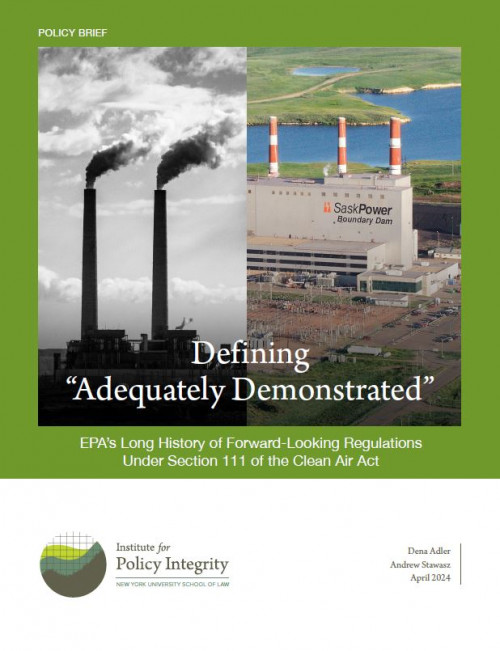We released this brief in response to EPA's 2024 Package of Power Plant Regulations and in conjuction with another brief titled: "Within Its Wheelhouse: EPA’s Latest Power Plant Regulations Rely on Traditional Approaches Left Available After West Virginia v. EPA"
In May 2023, the Environmental Protection Agency (EPA) proposed new limits for greenhouse gas (GHG) emissions from certain fossil-fuel-fired power plants under Section 111 of the Clean Air Act. Section 111 requires EPA to set limits reflecting the emission reductions achievable by applying what the agency determines to be the “best system of emission reduction” (BSER) that “has been adequately demonstrated,” and that meets certain other statutory factors. For existing coal-fired power plants scheduled to retire in 2040 or later, and new baseload gas-fired power plants, EPA proposed that the BSER include carbon capture and storage (CCS), a set of technologies that filter out carbon dioxide before it reaches the atmosphere and discard it safely, for example, by sequestering it underground. EPA’s record shows that some existing power plants have already successfully used CCS, and that the Infrastructure Investment and Jobs Act and the Inflation Reduction Act will spur higher adoption of the technology. CCS has also been deployed in other industries and is in the planning stages at additional power plant sites. Yet critics of the proposal have argued that CCS has not been “adequately demonstrated” because its use is not sufficiently widespread in the power sector today.
Dating back to the 1970’s, regulations reviewed in federal court confirm that technology can be “adequately demonstrated” even if it is not yet in widespread use. If Congress had meant to require EPA to set limits based only on technologies already in widespread use, it easily could have said so. But it did not. It instead chose the phrase “adequately demonstrated.” In contrast, Congress tied other Clean Air Act provisions to the best-performing technology already implemented in the relevant sector, further indicating that Section 111 does not carry the same meaning. The Clean Air Act’s legislative history further reveals that Congress intended for regulation to spur industry to adopt new technologies and processes. The Clean Air Act would be woefully ineffective at reaching these goals if it used only technologies and processes that industry had already widely deployed. EPA’s standards are useful precisely because industry would not take these steps to protect public health and the environment in their absence.
This policy brief summarizes the legal framework of Section 111 (including the legislative history and caselaw relevant to understanding its technology-forcing nature), walks through how courts have interpreted “adequately demonstrated,” reviews EPA’s past use of Section 111 to drive technology improvements, and explains why a potential Supreme Court decision that eliminates or curtails Chevron deference (a legal doctrine providing deference to reasonable agency interpretations of ambiguous statutory language) would not affect the longstanding interpretation of “adequately demonstrated.”

